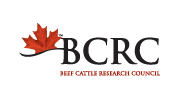An Interactive Tool to Inform Johne’s Disease Control in Beef Herds: What to Test, When and How Often
| Project Code: | KTT.05.18 |
| Completed: | In Progress. Results expected in March 2022. |
Project Title:
Johne’s Disease Control in Canadian Beef Herds: An Interactive Decision Tool for Veterinarians and Producers
Researchers:
Dr. Cheryl Waldner (Western College of Veterinary Medicine)
Background
Johne’s disease is a chronic, incurable enteric disease of ruminants caused by the bacteria Mycobacterium avium spp. paratuberculosis (or MAP). It results in significant economic losses in affected beef herds. There is concern that the risk of Johne’s disease in beef herds is increasing in part because of rapidly increasing herd sizes and herd dispersals.
Johne’s disease is particularly challenging to manage because infected animals can spread the disease to other cattle for months or even years before they show clinical signs. Tests to detect infected animals are also limited in their accuracy, especially in the early stages of disease. The best control option in beef herds is the identification and removal of cows that are shedding MAP before they contaminate the calving area and infect young stock. Testing is a significant investment of time and money, and testing options are limited to testing individual animals utilizing cultures and PCR of fecal samples and serum ELISAs.
Objective
To develop a web-based interactive tool to inform Johne’s disease testing options in individual cow-calf herds.
What they will do
Canadian surveillance data, including regional research, will be incorporated into a dynamic risk model developed to simulate different options for managing Johne’s disease transmission and control in a cow-calf herd. An agent-based model will be customized to reflect western Canadian herds and further developed into an interactive web-based tool that can be used by veterinarians and producers to help inform choice of test (ELISA, PCR), timing of test, and frequency of testing for control of Johne’s in individual beef herds. It will account for the imperfect nature of the tests and the role of chance in disease transmission. The model will be adapted as further data is collected.
Implications
Veterinarians and producers will be able to explore the impact of various testing and management strategies on the relative differences in predicted time and costs to control Johne’s in their herds. The web-based tool can be used to determine whether herd testing is cost-effective. For situations where herd testing is appropriate, the tool will help decision makers synthesize current research data to provide information on which test options are best suited for the individual herd history, management practices, and herd specific goals for disease control. Evidence-based testing and culling strategies will help to optimize input costs for Johne’s testing and minimize losses due to decreased productivity, cow mortality, and animal welfare challenges associated with clinically affected animals.









